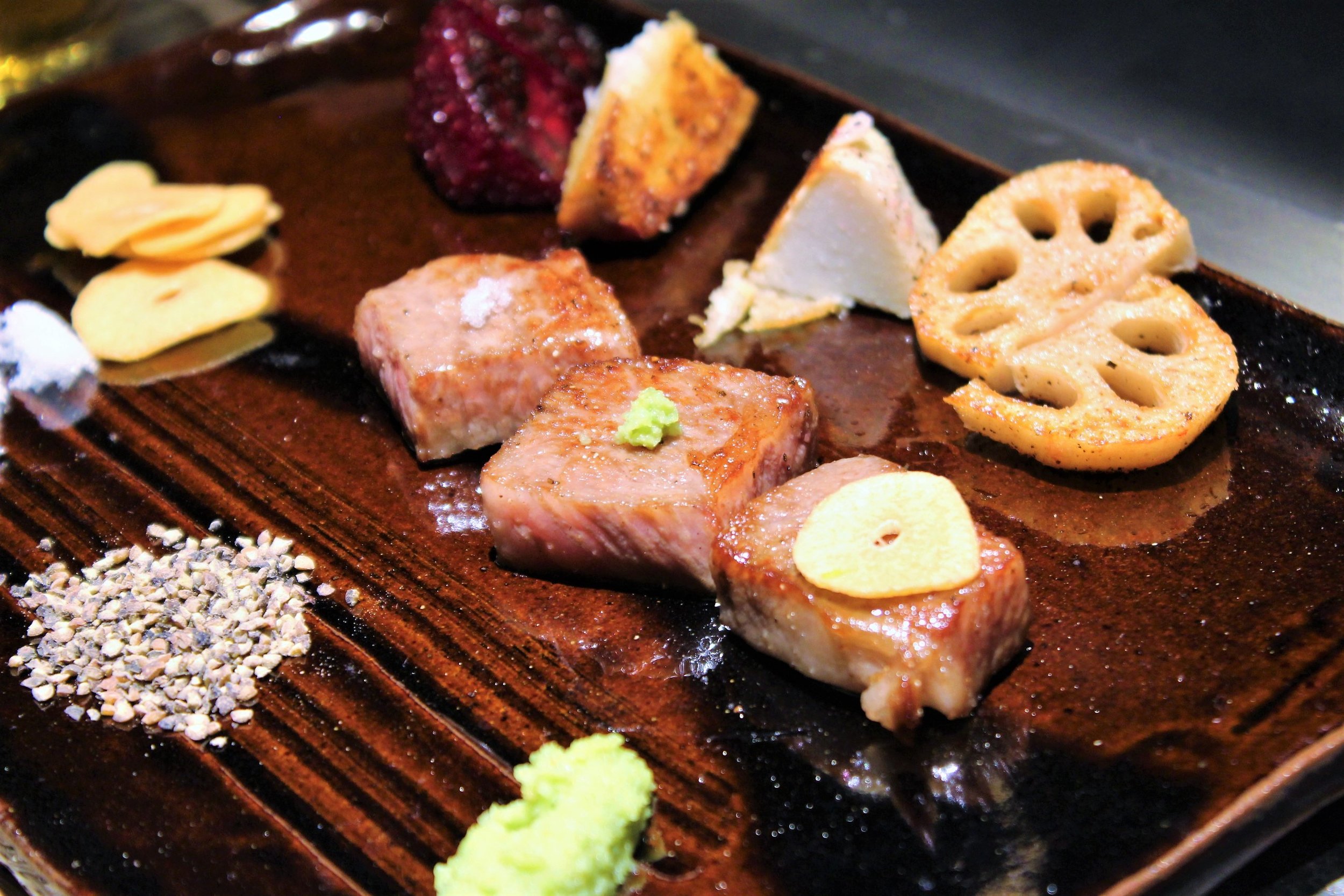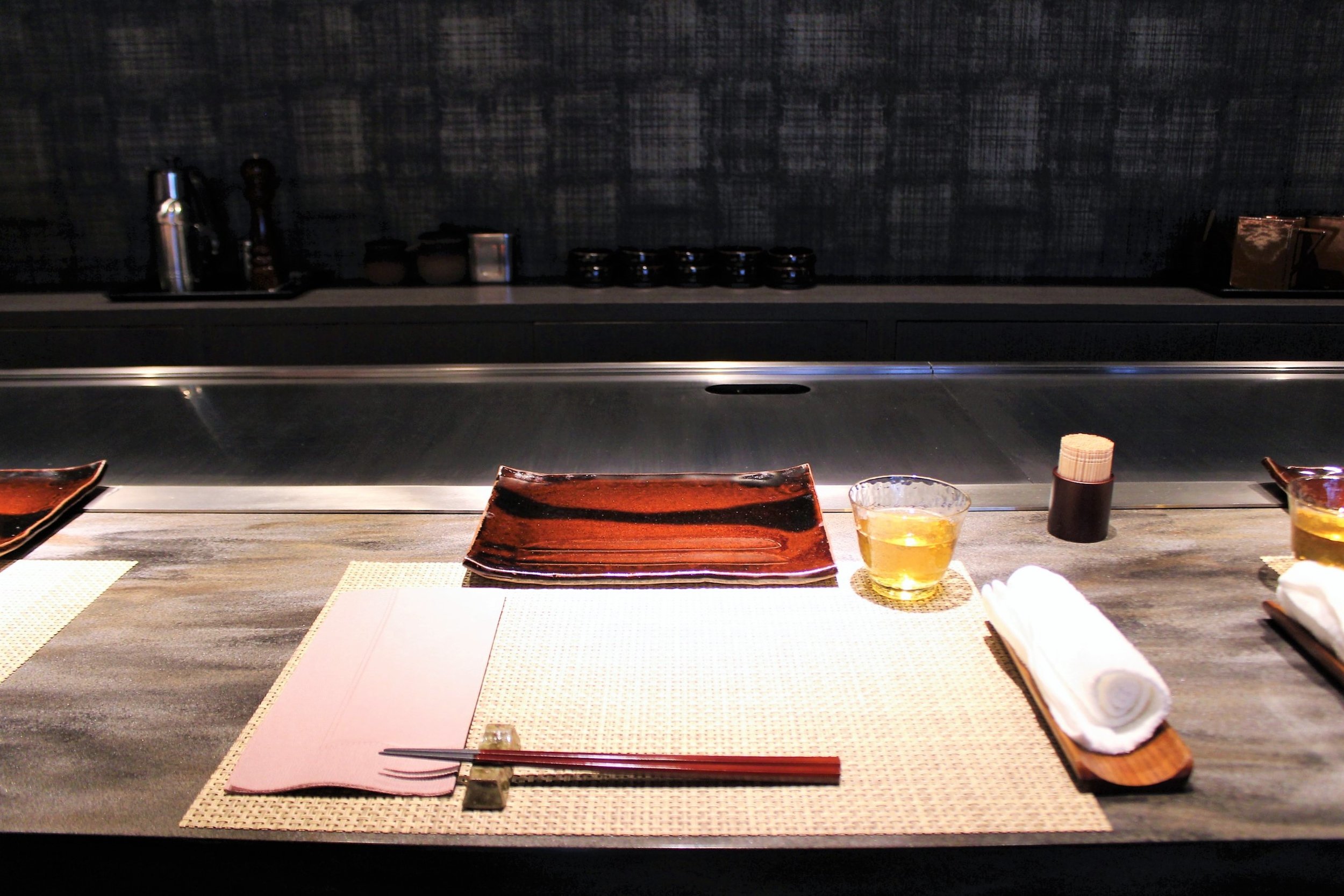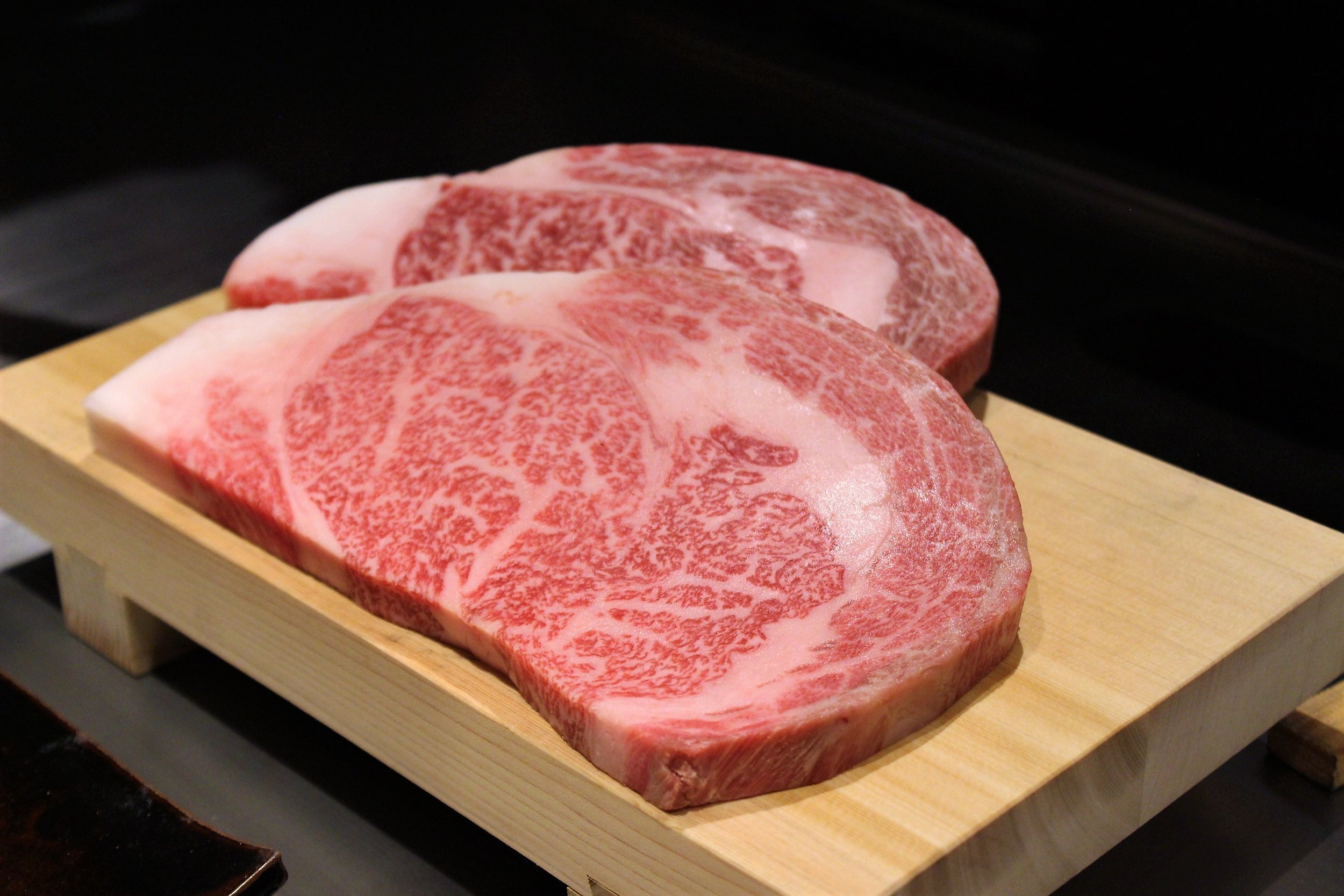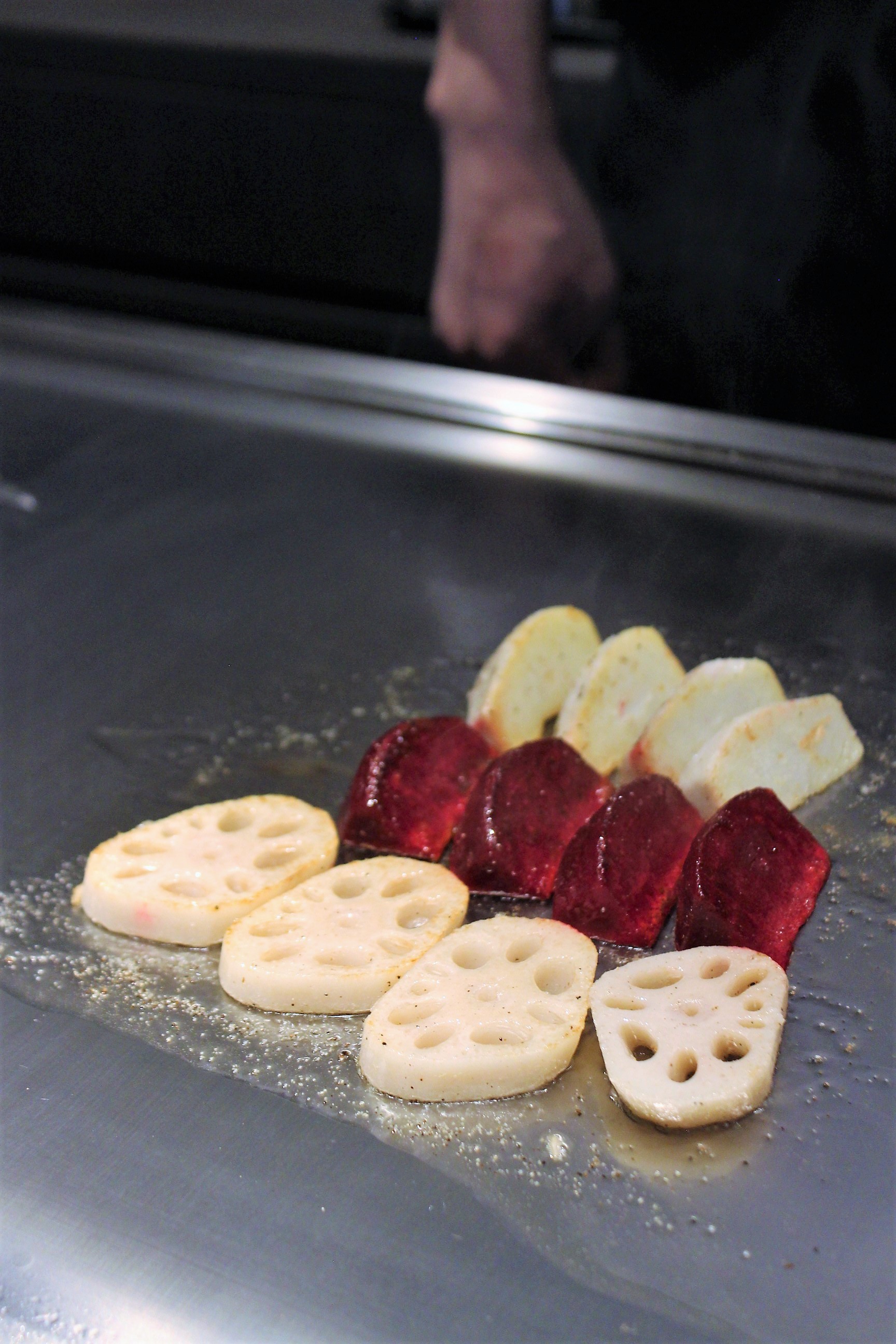Mouriya-Lin: Beauty and the Beef






Hello Everyone! Today, we're going to talk about some serious beef that I have with Kobe. HA. HA... Please laugh. Regardless of my bad jokes, we're going to learn a thing or two about Kobe beef and this awesome Japanese steakhouse called Mouriya-Linin Kobe, Japan. This beef is one of the Sandai Wagyu, which represents the top three premium beefs in Japan. Legit wagyu beef comes from Japanese cattle breeds raised in Japan. These Japanese breeds provide some serious marbling due to the excruciating amount of care that goes into making these fine works of art. The meat is intricately marbled with delicious, buttery fat. Results may be shocking.
To provide a bit of background on Kobe beef, it's amazing. If you've never heard of it, I know what you're thinking. Kobe beef comes from Kobe Bryant, right? Understandable, but, no. Or, you might be thinking, Kobe Bryant is so good at basketball that they named a beef after him. Interesting hypothesis but still wrong. This beef is named after a city in Japan called Kobe. Real Japanese Kobe beef has a marbling ratio of at least 6 and a meat quality score of 4 or 5 (B or A). The weight of beef from one animal should be less than 470 kgs and must be processed at a designated slaughterhouse in the Hyogo prefecture.
As demand for Kobe beef grew worldwide, Kobe-style beef was introduced in other countries like the United States. This breed is typically a mix between the original tajima strain and angus breed. These cuts of Kobe-style beef are darker in color and bolder in flavor. It's much more affordable than real Kobe beef and it's better than Angus beef. However, in no way does it compare with real Kobe beef.
Demand for Kobe beef can be attributed to the fact that the Japanese advertise it as a high-end delicacy similar to caviar or truffles. With a limited supply of only about 3,000 cows a year, Kobe beef has the right to dictate high prices in the market. Kobe beef can range anywhere from $170/pound to $320/pound. Sounds like a lot to pay for some meat but it's worth it. One small bite could restore your faith in humanity.
Anyway, I highly recommend Mouriya-Lin if you're looking for some steak in Kobe, Japan!
If you're interested, check out:
For our meal at Mouriya-Lin, we got two orders of the Grade A4/A5 Kobe Rib-eye (12,000 Yen) and two orders of the Grade A5 Mouriya Special Select Rib-eye (6,500 Yen) to share between me and my parents. Our seats were right in front of the grill so it was like teppanyaki style.
To start, we got some Fukuju sake (see above) to share. While enjoying our sake, we watched as the chef began to prepare our meal. First, he set up our condiments/toppings, which included fresh wasabi, black pepper, salt, and crispy garlic.
Additionally, he grilled some Japanese Potatoes, Lotus Roots, and Beets (see above). Each person also got some Mushroom Cream soup and a Salad (see below) as an appetizer.
And then the fun began. The chef placed the slabs of Kobe onto the grill. The natural fat and oil of the steak actually started to splatter a bit. So, if you are sitting directly in front of the chef, be careful because you are in the splash zone. We watched as the chef strategically cut the beef into even servings, while cutting off the edges of fat. It seemed effortless.
Kobe is completely different from any other beef. More specifically, Kobe beef is more rich and intense in flavor than other types of beef. The flavor is so rich that it is best eaten in smaller portions. The marbling is fantastic with snow-like streams of sashi (fat). The Mouriya Special Select Rib-eye is almost half the price of the Kobe Rib-eye.
The Mouriya Special Select beef is very similar to the Kobe beef but does not have the exact qualifications to be called "Kobe" (e.g. the Mouriya cows are raised in a ranch in Youfu city). The main difference in the real Kobe Rib-eye was that the meat tasted more buttery and juicy. I recommend trying both of these orders together because you can notice and enjoy the subtle differences.
Lastly, the chef took the extra pieces of fat and grilled them until they were crispy (see above). The larger pieces were provided on the side by themselves. The smaller pieces were diced and mixed with Mung Bean Sprouts and Alfalfa Sprouts. OH MAN. The fat tasted so good. It's so hard to get sick of that heavenly taste.





